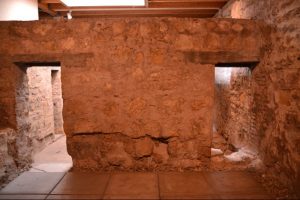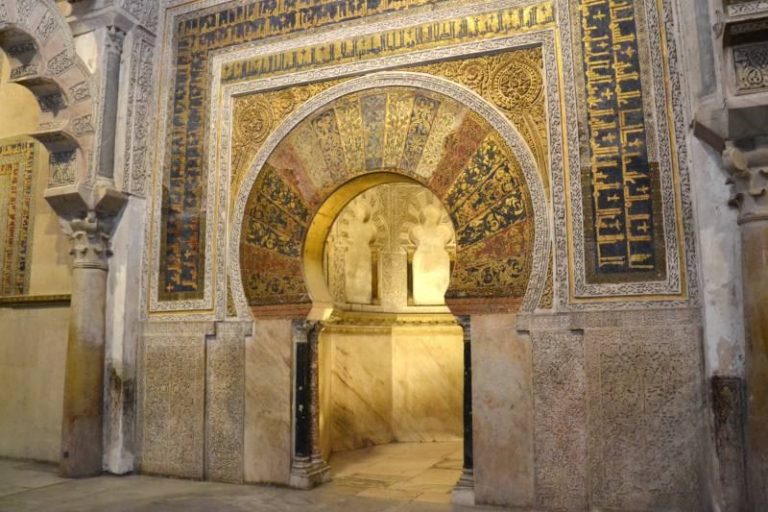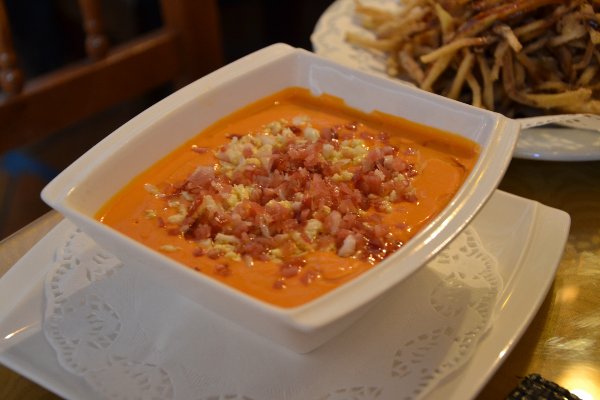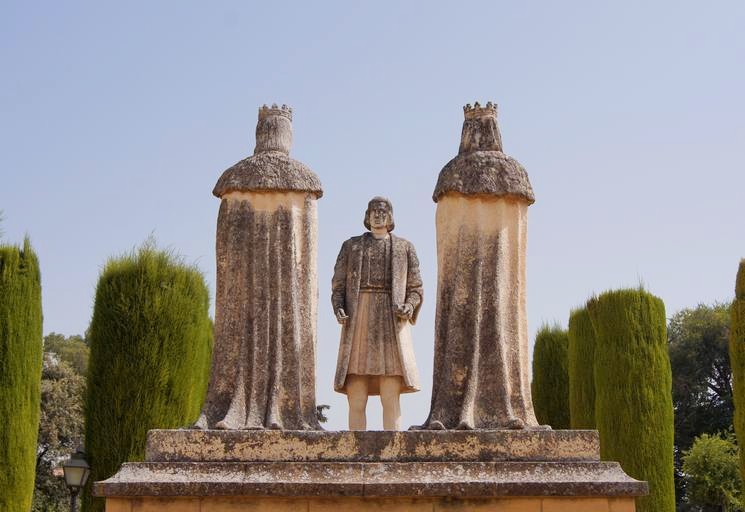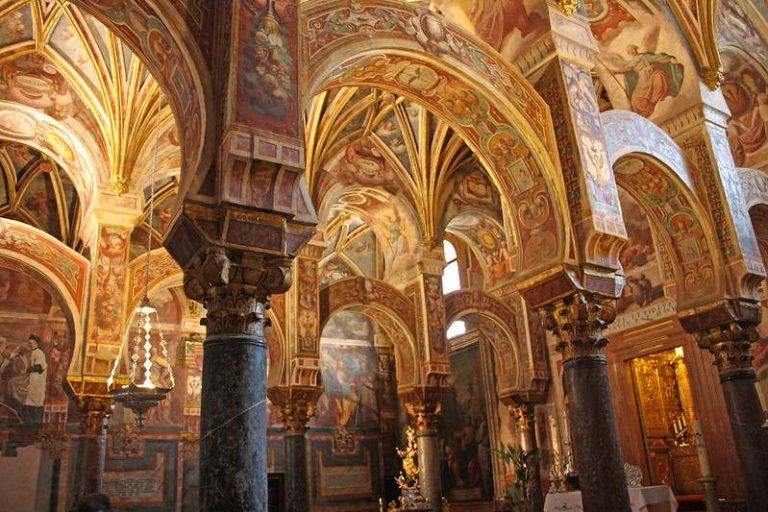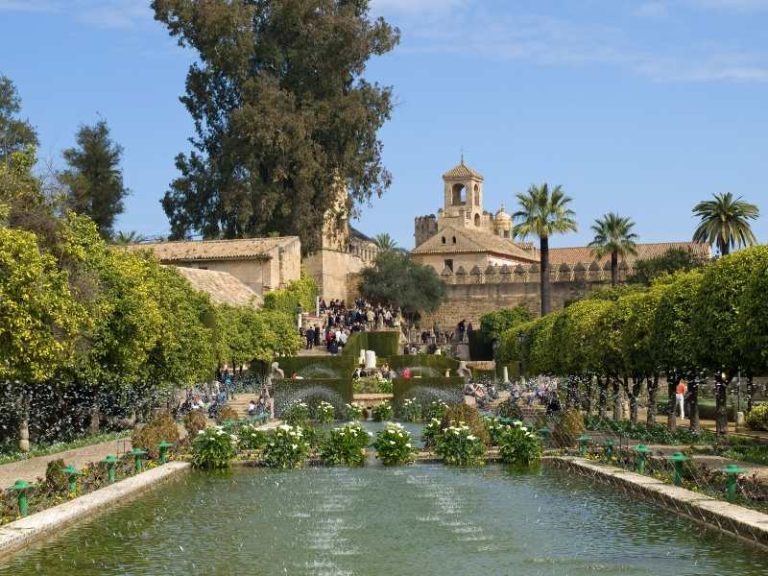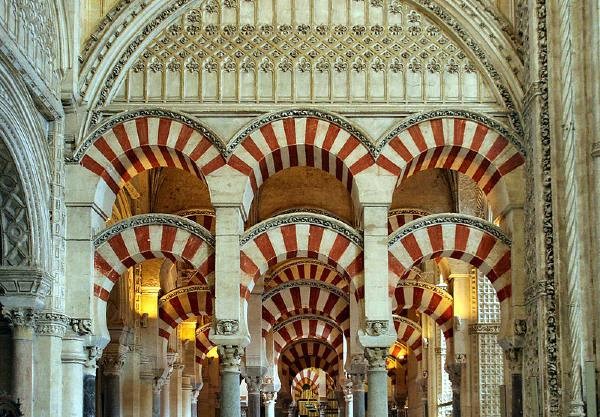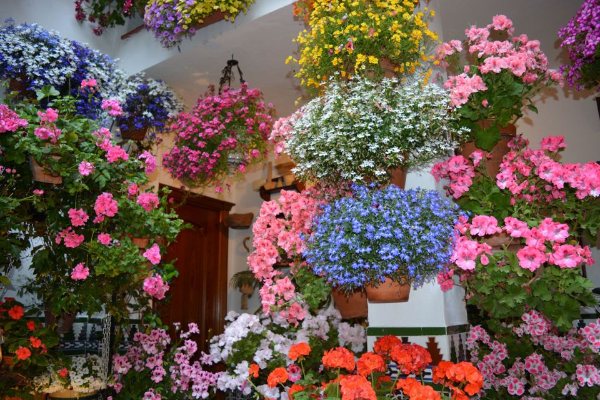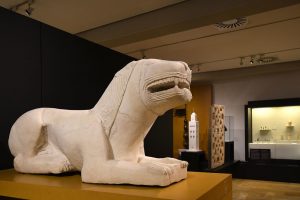
The palace-city of Medina Azahara
If there is a place in Cordoba that reflects the splendor of the city during the Muslim era, that is the ancient palace of Medina Azahara.
The Caliph of Cordoba himself was the promoter of the palace and supervised every last detail.
Today Medina Azahara is one of the most visited attractions in Cordoba. Every year it receives hundreds of thousands of tourists who are amazed at this incredible archaeological site.
Use this table of contents to navigate
Symbol of a New Caliphate
Medina Azahara was a palace-city located 6-8 kilometers from Cordoba. The whole complex was built by Abderrahman III, person that changed forever the history of the city with his decision.
In 929 Abderrahman III abolished the Emirate and declared Cordoba capital of his own Caliphate (Umayyad Caliphate of Cordoba). This declaration posed a huge challenge to the existing Abbasid Caliphate in Baghdad (Irak).
What is the difference between Emirate and Caliphate?
The Caliphate is the pan-islamic state/federation where is governing Caliph, who is supposed to be the supreme political and spiritual leader of the whole Islamic world. There were only few Caliphates in the world history, being the last one the Ottoman Caliphate, abolished in 20th century with Atatürk´s reforms.
Emirate is a smaller islamic state, ruled by Emir, governor of that exact region. Nowadays example: UAE.
During the tenth century, Cordoba reached its highest development: the trade was flourishing; the population was multiplying; philosophers, poets and musicians were coming to the city from all around the world. Except for some military campaigns, the Calipha managed to reach a certain degree of understanding with the Christians of the north of Spain..
In the North Africa, the Fatimid Kingdom (enemy of the Caliphate) was controlling several important trade routes to Cordoba, what created a remarkable tension between the Caliphate of Cordoba and the Fatimid Kingdom.
In this challenging context, Abderrahman III decided create a palace that would represent the glory of his Caliphate: Medina Azahara. This palace, the most important in Europe at that time, would be used as propaganda symbol to his people and his enemies in North Africa. Just imagine, Medina Azahara was even larger than the Grand Palace Abbaside in Baghdad. Quite a provocation, don’t you think? 😉
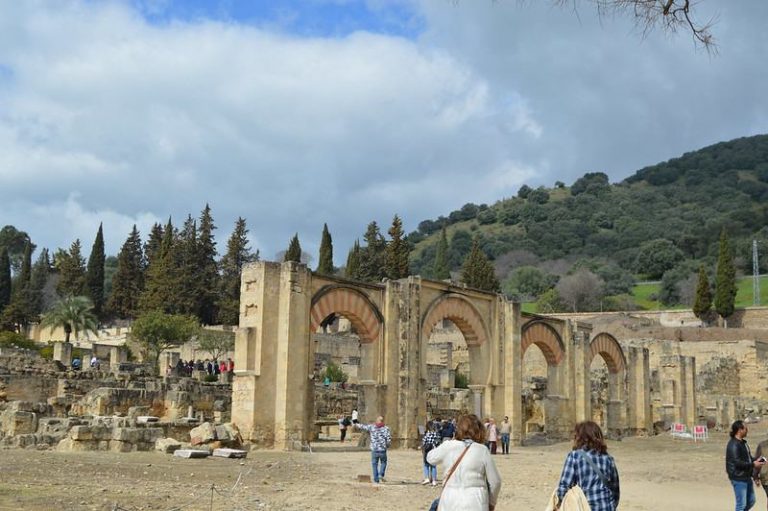
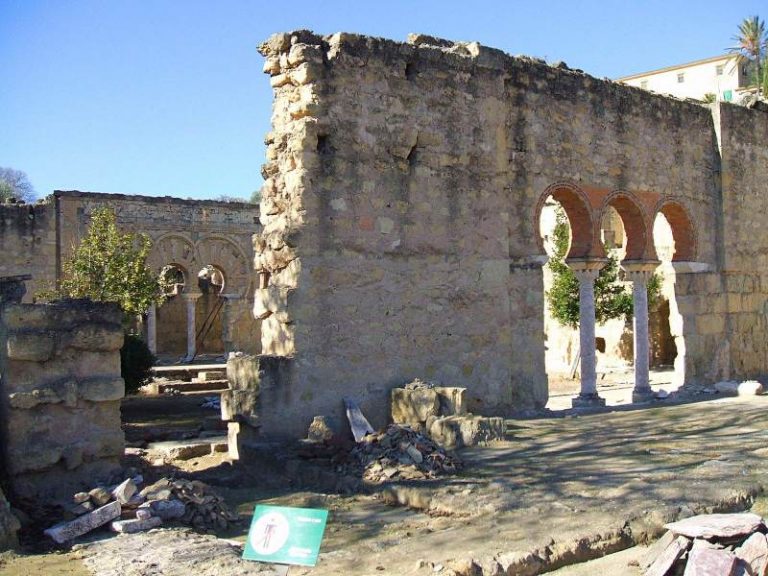
The first stone of Medina Azahara was laid in 936 and was finished about 975. Legend says that Abderraman III named this city in honor of his wife, “Zahra” which in Arabic means “flower.”
The abundant Arabic literature describes in detail the richness of this amazing palace-city where the Caliph lived and where the ceremonies and receptions of Christian ambassadors or even military parades were held.
Inside of Medina Azahara Palace
Unfortunately, much of the palace was destroyed and is in ruins. However, some parts have been recovered and are in really good condition. Architects designed the fortified palace-city on three levels:
- The official residence of the Caliph was located in the highest part of the city.
- Residences of the Viziers, Government Buildings, gardens, etc. These two levels were protected by a solid wall.
3. The real city: houses of artisans, workshops, city Mosque, soldier barracks, baths, zoco (market), etc.
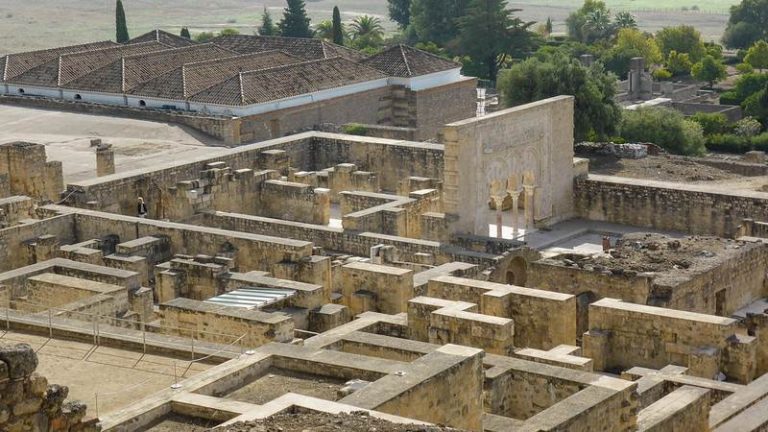
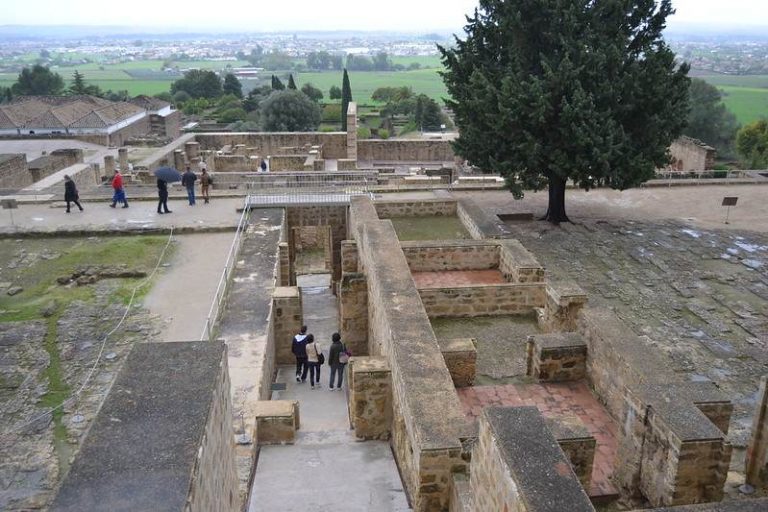
The North Gate
The North Gate controlled the entry and exit of food supplies and building materials to and from Medina Azahara. On one side of the gate there was a watchtower designed for the soldiers. At the same time, a downward path connected, via 4-gates, with the next level of the city.
The Army House
In this part of the palace-city guests waited for the Caliph to be received. On the south side of the Army House there is a large square that originally had no gardens, which were designed in the twentieth century. Stables were also built nearby (western part). Finally, on the eastern part of the square we can admire the remains of some small residences.
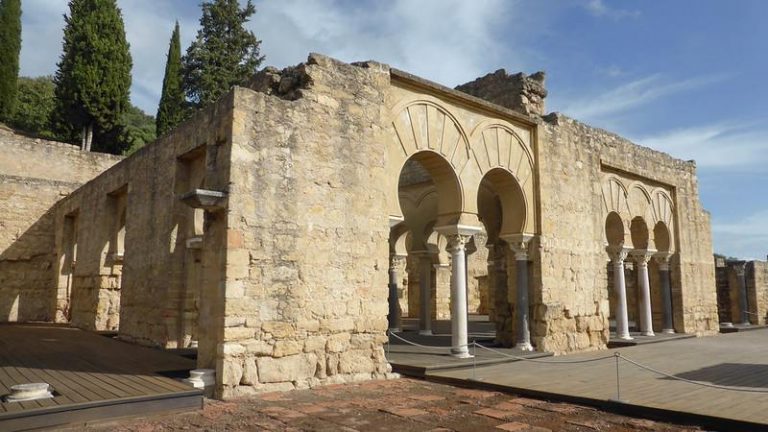
The Great Portico
The Great Portico was the entrance to the real heart of the city, where the offices, administrative buildings and luxury rooms were located. In addition, military parades, ambassador receptions and solemn ceremonies were held regularly here.
A small street ramp connected the Army House with the Grand Portico. The Caliph’s guests walked down this small street to reach this awesome Portico whose mission was to impress the guests of the Caliph.
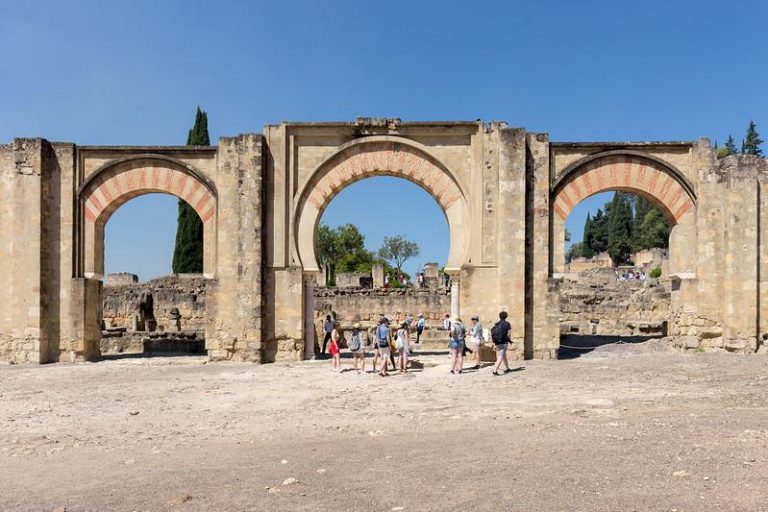
The Rich Lounge of Abderraman III
It is, without doubt, the most important part of Medina Azahara. The Rich Lounge of Abderramen III can be defined as a magical place that perfectly represents the luxury and power of this palace-city. The Rich Lounge was used by Abderraman III to hold his private festivals, ceremonies, ambassador receptions, and banquets, always surrounded by beautiful dancers, slaves and multitude of officers.
The Rich Lounge of Abderraman III can is divided into three parts: the throne of the Caliph (central nave), and the side naves where the officers and viziers sat and converse together.
The beautiful decoration here is an example of the splendor of Al-Andalus in the tenth century. The Caliph wanted to amaze his guests and he spared no expenses in decorating this part of the palace: marble columns and amazing arches were built, and wood ceilings with stars were designed by the best decorators of the Caliphate.
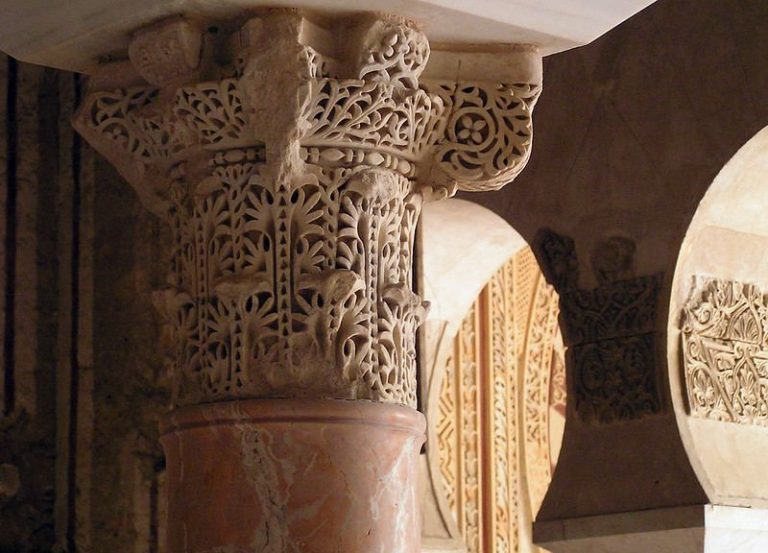
On the eastern side of the building were built several rooms, which were directly connected with the Rich Lounge of Abderraman III and paved with white marble. In these rooms the Caliph spent part of his private life when he was not in his official residence situated at the top of the palace-city.
Next to the Rich Lounge there is a large garden divided into 4 sections: in the geometric center of the garden there was a small pavilion called “Central Pavilion” which was surrounded by four pools.
Aljama Mosque
On the eastern part of Medina Azahara, outside the walls, we can see the remains of the Mosque of Medina Azahara. Like every other Mosque, this building had a courtyard where Muslims could make ablutions and an Oratory where the faithful prayed.
This mosque was well oriented toward Mecca unlike the Mosque of Cordoba. From the Rich Lounge of Abderraman III, the Caliph could go straight to the Mosque through an overpass built by security reasons (Sabat). Next to the Mosque, we find several houses belonging to the people who worked in the Mosque.
Yafar House
The residences of the Senior Officials and Caliph’s collaborators were located in this part of the city. Yafar House is a perfect example of a seigniorial house from the 10th century. Its large size indicates that Yafar was an important figure in the political life of Medina Azahara and an official close to the Caliph.
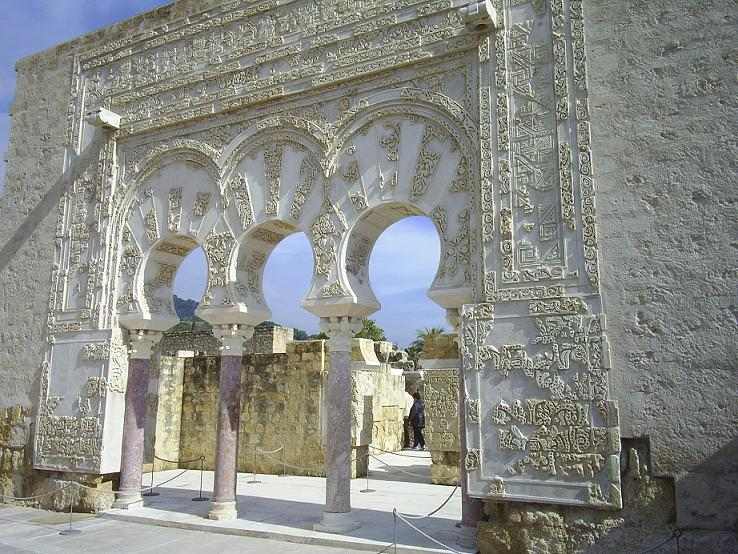
Pool House
Just few meters away from Yafar House visitors can find a small building. Historians still cannot say with certainty to whom this house belonged, but according to some experts, it could be Al Hakam’s house in times when he was the crown prince. In the central part of the house there is a garden with a small pool. There was also a bathroom which was shared with the Yafar House.
Worker Houses
There is a group of houses which belonged to soldiers and people who worked in domestic service. If we look closely at the archeological remains, we can confirm that this part of the city was used to cook food for Senior Officials. In fact, an oven to bake bread is still preserved.
The Royal House
The Official Residence of the Caliph was located in the highest part of the city: from here he could see the whole Medina Azahara palace-city and the almond groves planted around the city. Unfortunately, this part of the city is being rebuilt and is closed to the public.
Museum of Medina Azahara
Finally, we highly recommend a visit to the Museum of Medina Azahara where visitors can enjoy an incredible collection of pottery pieces found in Medina Azahara. Don’t forget that Muslims were true masters in the manufacture of ceramics and developed a powerful industry in Al-Andalus.
In addition to ceramics, the museum displays all kinds of objects found in Medina Azahara such as coins, tools, plates, trays, etc.
However, two pieces stand out from the rest:
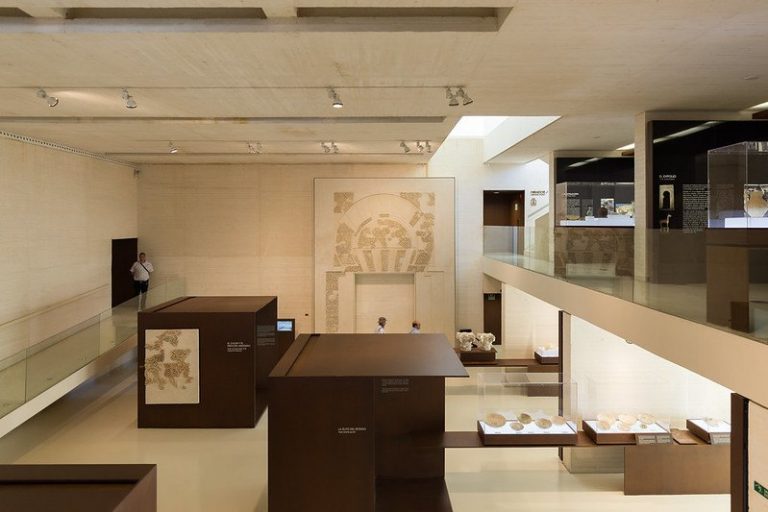
Medina Azahara Deer
This small piece, valued as one of the masterpieces of Hispano-Muslim Art, was placed in a fountain of Medina Azhara. Experts consider that this piece was not alone but was part of a set of figures like the Lions Courtyard in Granada.
Three pieces of this set have been found so far: one of them is located in the Medina Azahara Museum, another one is in the Archaeological Museum in Madrid and the third one was bought by an Arab sheik (4 million US dollars) and is exhibited in the Museum of Islamic Art in Qatar.
Zoomorphic Figure
According to some experts, this figure may be a giraffe because of its proportions, especially for its long neck. Archaeologists believe that this figure was used as a pitcher to hold liquid and pour it into glasses. The piece was stolen from Medina Azahara and, after traveling throughout Europe, was put up for sale in a famous Auction House in United Kingdom where the Andalusian Government purchased it for 220,000€
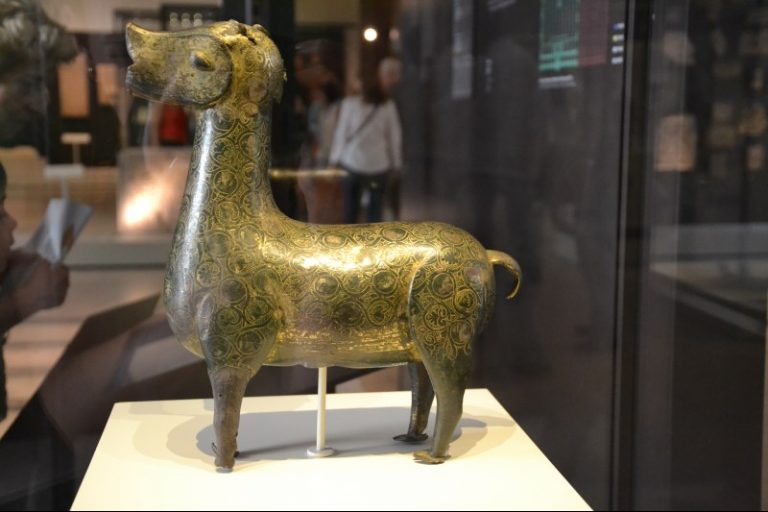
How to Get to Medina Azahara from Cordoba?
Medina Azahara is located 8 kilometers (5 miles) from the city center. So you will need to use public transport or your own car to get to Medina Azahara.
Taxi from Cordoba to Medina Azahara
If you take a taxi from the city center to Medina Azahara, the price is approximately €15. Considering that a taxi can transport up to 4 people the price is really good. Of course, this option is the most comfortable since the driver can pick you up right at your hotel.
Bus from Cordoba city center to Medina Azahara
There is a bus which connects the city center with the palace-city of Medina Azahara. The approximate duration of the trip is 20 minutes.
How much does the bus from Cordoba to Medina Azahara cost?
The price of the bus from Cordoba to Medina Azahara is €9 for adults and €5 for children between the ages of 5 and 12 . (Children under 5 years old, free price).
Bus Schedules
- Tue-Sat: 10:15am / 11am / 11:45am / 14:40am
- Sun: 10:15am / 11am / 11:45am
- On Monday the palace of Medina Azahara is not open.
It is important to be punctual as the buses leave on time.
Where to take the bus to Medina Azahara?
The bus stop for the bus to Medina Azahara is located in Paseo de la Victoria, in front of the gourmet market La Victoria.
Useful Information Medina Azahara in Cordoba
Opening Hours Medina Azahara
Monday closed.
January 1 - March 31
Tue- Sat: 09:00-18:00.
Sunday & bank holidays: 09:00-15:00.
April 1 - June 30
Tue- Sat: 09:00-21:00.
Sunday & bank holidays: 09:00-15:00.
July 1 - September 30
Tue- Sat: 09:00 -15:00
Sunday & bank holidays: 09:00-15:00.
October 1 -December 31
Tue - Sat: 09:00 - 18:00
Sunday & bank holidays: 09:00- 15:00
IMPORTANT! January 1, January 6, May 1, December 24, December 25 and December 31 the palace of Medina Azahara will be closed
Address:
Carretera de Palma del Río, km. 5,5, Córdoba
Built in:
10th century (Muslim period)
Tickets Medina Azahara:
Free Admission for EU Citizens
Non-EU Citizens: €1,5
IMPORTANT! To visit Medina Azahara you need to take a shuttle bus from the bus stop, at the foot of the hill, to the archaeological site which costs 2,15€).

